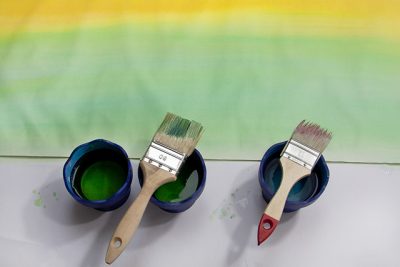How to Pick the Right Paint Color for Your Home Deck
Aside from your good painting experience, choosing the right color to paint your deck is very essential. When you do this in an appropriate way, the deck color will beautify and restore your residential area. However, when you work it out the wrong way, the results will be a total disappointment.
 To help make your home look like a paradise, here are the simple thinks to consider while selecting a color for your deck:
To help make your home look like a paradise, here are the simple thinks to consider while selecting a color for your deck:
Exterior color of your house
The visible color will guide you choose the right color for your deck. When you have different types of colors already existing, you should make sure that your deck color blends well with other colors. It should not be interfering with the flow of other colors.
Components of your deck
The material of your deck equally matters a lot. Choosing the right color for painting your floor will depend on the materials used that are wood, composite, stone bricks or clay bricks.
Try out
Try to experiment with different colors to see how best they can fit. Purchase different colors and paint them in small sections outdoors where you can examine them at various times of the day. View them together and check out which blends well.
Which parts of the deck are frequently in use?
Despite the fact that this can be a surprise to you, keep it in consideration. It comes about due to friction, which causes wearing and tearing of the surface. For example, the entryways have higher foot traffic than the case supporters. Hence, consider the color stains you apply to these areas appropriately to avoid frequent maintenance demands.
Rules for color schemes.
For instance, your house is located in between neighboring houses with brighter colors. Concurrently, you will need to select a deck color that will not clash with your neighbors. It is better to choose a scheme that suits and blend well with the others.
You can also come up with your color scheme. Considering which type of material used to make your deck is a necessity as it also affects the layer color. For example, different types of woods have a different effect on how stain will appear on them.
Stains will appear in many ways depending on the color and opacity you select. A transparent stain will let the natural color of wood glow while tinted will just allow a little. Consequently, a solid stain will let the minimal color of wood appear.
Landscape
You should consider surroundings like trees, gardens and shrubs around. A more wooded landscape will bring shade to your home a dull color for the deck can be preferred to match. However, a flower garden may suggest a bright color for the deck.
Furthermore, you should also consider the rays of the sun. Direct rays from the sun will clean out colors. Hence, bright colors will better suit in a shaded region.
Deck colors
Well, I think you are now able to select your deck color that will suit well. However, we always leave out something for our readers to perfect their skills. Here are some of the clues that can motivate and lead you into choosing your right color.
- For a small area, a dark color scheme such as black or chocolate brown is preferred. They do well there and may dominate to a great space.
- For homes decorated with cottage or Cape Cod, dark blue is preferred. Moreover, it works well with other additional colors such as purple and pink.
- Green is the most used color. It blended well with most homes and associated with others like red and black.
- For warm color schemes, gray can perform better. Simultaneously, such a dull tone will not show dirt easily.

 Engaging in the slow drying of oil-based paints is notorious, majorly because one constantly has to sit back and wait for paint to dry. 8 hours is the least amount of time for which the oil based paints can take to dry, unlike the latex paint that takes about 2 hours before the recoating process begins. The whole idea of this slowing down the process may sound problematic. The advantage here is that the slow drying process creates a smoother finish by allowing the oil-based paint to flow, allowing brush marks to level out on the surfaces hence the smooth finish.
Engaging in the slow drying of oil-based paints is notorious, majorly because one constantly has to sit back and wait for paint to dry. 8 hours is the least amount of time for which the oil based paints can take to dry, unlike the latex paint that takes about 2 hours before the recoating process begins. The whole idea of this slowing down the process may sound problematic. The advantage here is that the slow drying process creates a smoother finish by allowing the oil-based paint to flow, allowing brush marks to level out on the surfaces hence the smooth finish. A dry paint layer is a common occurrence in an experience in which one opens a container of paint. However, this is not charming to find, as it is often likely the paint solids will find their way to the paint itself. To solve this roll aluminum foil around the paint can cut the circle off precisely and put into the paint surface. Blow air into the can while you put back the lid, preventing drying.
A dry paint layer is a common occurrence in an experience in which one opens a container of paint. However, this is not charming to find, as it is often likely the paint solids will find their way to the paint itself. To solve this roll aluminum foil around the paint can cut the circle off precisely and put into the paint surface. Blow air into the can while you put back the lid, preventing drying.



